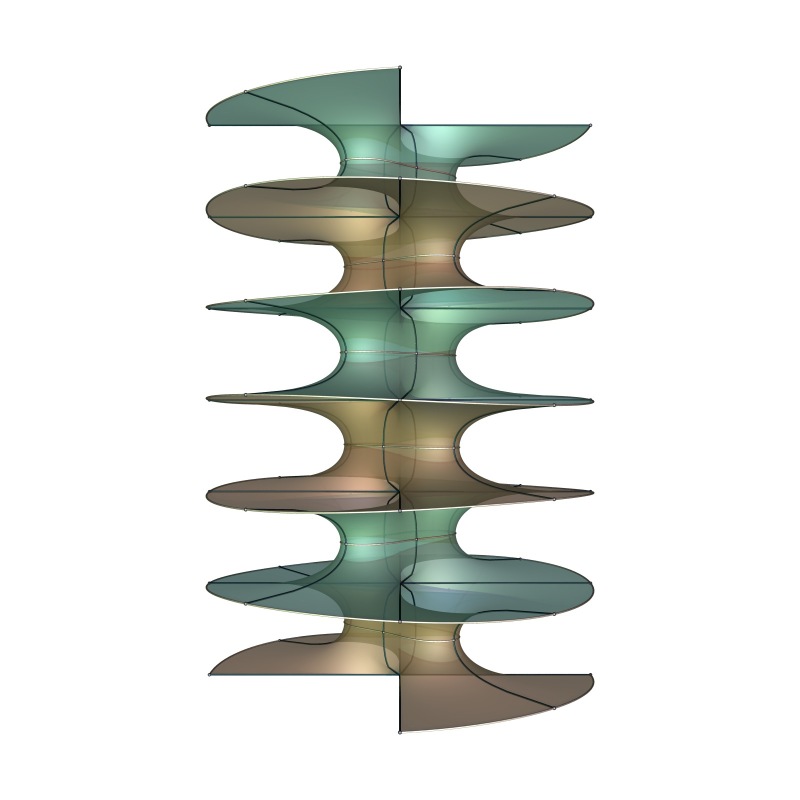Out of the flurry of minimal surfaces that was inspired by the Costa surface, a particularly fundamental new surface is the Translation Invariant Costa Surface, discovered by Michael Callahan, David Hoffman, and Bill Meeks around 1989.
Like Riemann’s minimal surface, its ends are asymptotic to horizontal planes, but it is invariant under a purely vertical translation, and the connections between consecutive planes are borrowed from the Costa surface. Surprisingly, in a few ways this surface is even simpler than Costa’s surface. To see this, let’s look at a quarter of a translational fundamental piece from the top:

It is bounded by curves that lie in reflectional symmetry planes, and cut off with an almost perfect quarter circular arc. Hence the conjugate minimal surface will have an infinite polygonal contour, like so:

It is not too hard to solve the Plateau problem for such contours, and adjust the edge length parameter so that the conjugate piece is the one used for the Translation Invariant Costa Surface. It is also possible to argue that the Plateau solution is embedded, and conclude the same for the Translation Invariant Costa Surface. All this is not so easy for the Costa surface itself.

Above is a variation with one handle added at each layer. Surprisingly, the corresponding finite surface does not exist. One can add deliberately more handles. Below is a rather complicated version that I called CHM(2,3), with a wood texture rendered in PoVRay in 1999, when I had figured out how to export Mathematica generated surface data to PoVRay.
